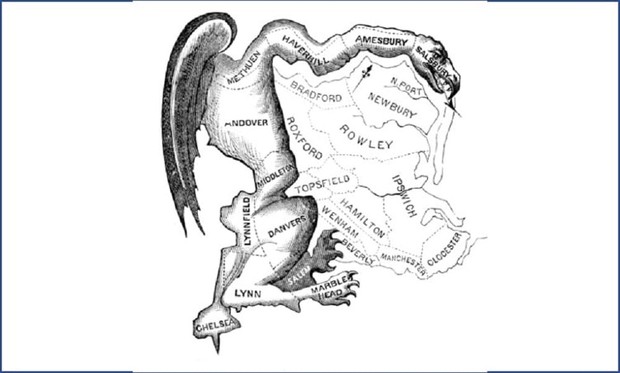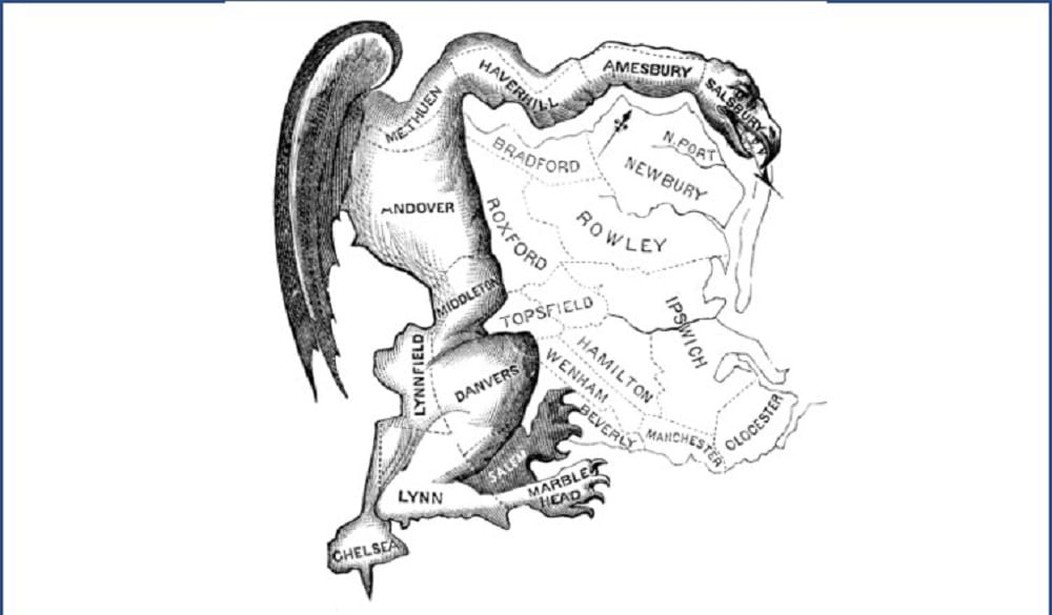
The left has been engaged in a legal war to get congressional districts from the federal courts that they cannot win through the political process while showing they are more than willing to use the political process where they can. This last term saw the Supreme Court handle four redistricting cases. In two of the cases, Democrats were trying to resurrect arguments they’d successfully used for years with tame and sympathetic Justice Department lawyers to invalidate congressional redistricting, that is, they cried racism. In one of the cases that involved Wisconsin, they claimed that state congressional districts should result in a state legislature with the same partisan makeup as the general population. And in another, Maryland Democrats were accused of butchering a congressional district to guarantee a Democrat won…rather the opposite of what they were complaining about in Wisconsin.
Last Monday, the Supreme Court took the easy way out on two cases. In regards to Maryland and Wisconsin, they said the plaintiffs lacked standing and sent the cases back to lower courts. They dispatched of two other cases today and did so in a way that lays bare the divisions in the Supreme Court on gerrymandering.
First settled was a case from North Carolina called Rucho vs. Common Cause. There a three-judge appeals court panel had struck down North Carolina’s redistricting map because it, unbelievably, favored Republicans over Democrats. One of the authors said words to the effect that the only reason the map had ten Republican and three Democrat districts was because he couldn’t find a way to draw one with eleven and two. The Supreme Court vacated the appeals court ruling and sent it back to district court to be reconsidered in light of the Wisconsin decision. This means that the current North Carolina map is temporarily safe until the progressives find some way to follow the roadmap Kagan gave to convince her that standing existed.
A racial gerrymandering case arising from Texas was settled in a 5-4 decision. This case, Abbott vs. Perez, is fairly complicated. Depending upon which side you want to go with, Texas was either being sued for following a redistricting scheme imposed upon it by a federal court or it hoodwinked a federal court and carried out its racist designs until it was discovered. (Read the case summary.) The opinion was written by Justice Alito and joined by Chief Justice Roberts and Justices Kennedy, Thomas, and Gorsuch. The court agreed with Texas’s map with the exception of one Texas House legislative district:
HD90 is an impermissible racial gerrymander. HD90 was not copied from the Texas court’s interim plans. Instead, the 2013 legislature substantially modified that district. In 2011, the Legislature, responding to pressure from counsel to one of the plaintiff groups, increased the district’s Latino population in an effort to make it a Latino opportunity district. It also moved the city of Como, which is predominantly African-American, out of the district. When Como residents and their Texas House representative objected, the Legislature moved Como back. But that decreased the Latino population, so the Legislature moved more Latinos into the district. Texas argues that its use of race as the predominant factor in HD90’s design was permissible because it had “good reasons to believe” that this was necessary to satisfy §2, Bethune-Hill, 580 U. S., at ___. But it is the State’s burden to prove narrow tailoring, and Texas did not do so on the record here.
This is more of a finding that the Texas legislature was trying to create a minority-majority district and ended up creating one that favored the wrong minority.
The key takeaway from this opinion is that a majority is tired of litigating redistricting and it is particularly tired of district courts interjecting their whims rather than deferring to the state legislature.
https://twitter.com/derektmuller/status/1011253399411494912
And there is an even more ominous concurrence from Thomas and Gorsuch:
JUSTICE THOMAS, with whom JUSTICE GORSUCH joins, concurring.
I adhere to my view that §2 of the Voting Rights Act of 1965 does not apply to redistricting. See Cooper v. Harris, 581 U. S. ___, ___ (2017) (concurring opinion) (slip op., at 1) (citing Holder v. Hall, 512 U. S. 874, 922–923 (1994) (THOMAS, J., concurring in judgment)). Thus, §2 cannot provide a basis for invalidating any district, and it cannot provide a justification for the racial gerrymander in House District 90. Because the Court correctly applies our precedents and reaches the same conclusion, I join its opinion in full.
They reject the entire underpinning of the lawsuit.
What do we know from this?
Unless several Ginsburg and Kagan clones are appointed to the Supreme Court, the concept of the partisan gerrymander being unconstitutional is dead and challenges to state redistricting maps based on the Voting Rights Act are on life support. We can also see that the liberal side of the court is going to go down swinging and the final gerrymander decision is going to be very contentious and ugly. Take, for instance, Alito’s treatment of Sotomayor’s dissent:
https://twitter.com/derektmuller/status/1011249629269147648
When allegations of bad faith become the reason for dissent, the Supreme Court is one short step from being just another institution the left has corrupted.
=========
=========
Like what you see? Then visit my story archive.
Follow @streiffredstate
I’m on Facebook. Drop by and join the fun there.
=========
=========














Join the conversation as a VIP Member